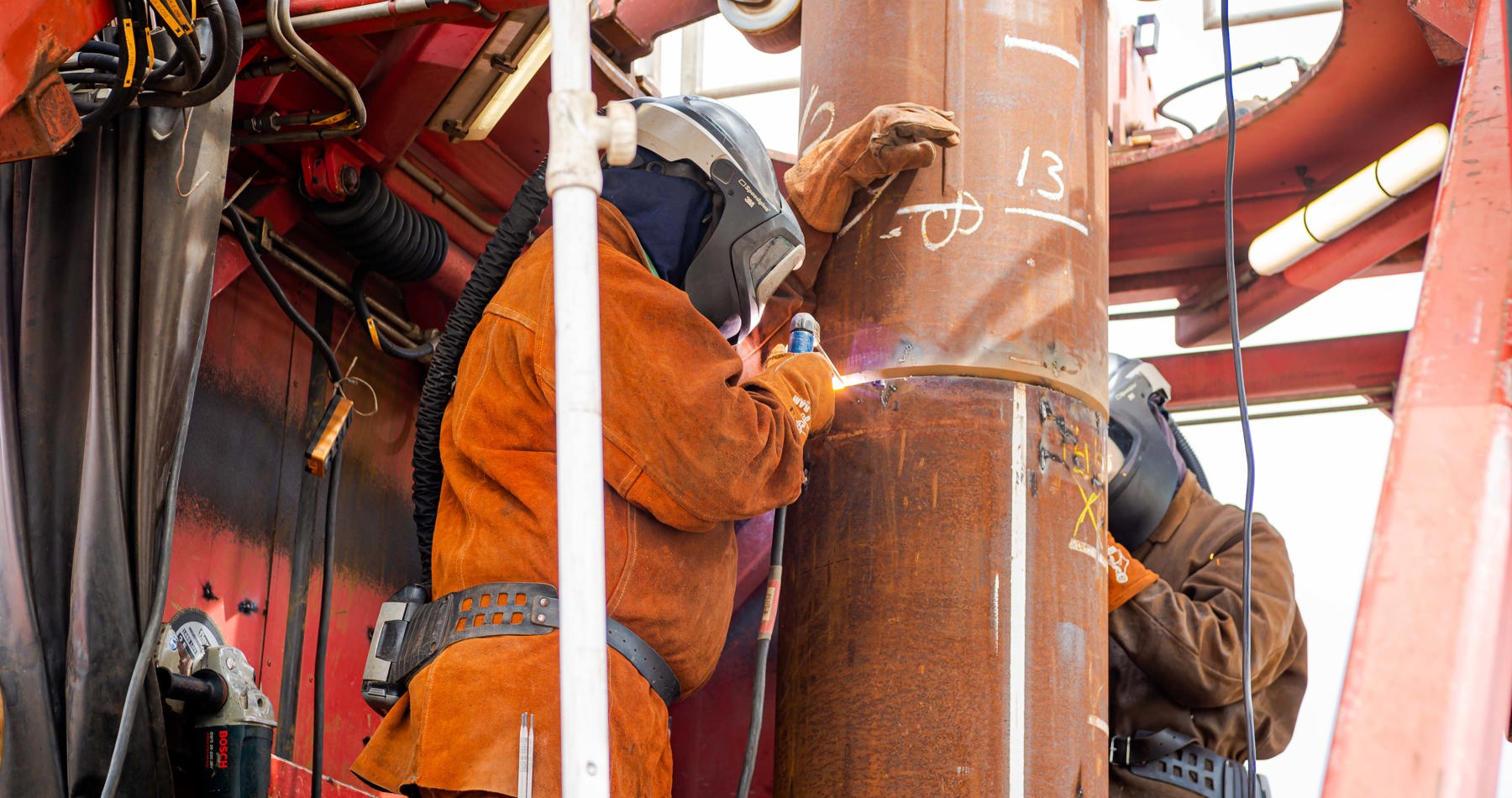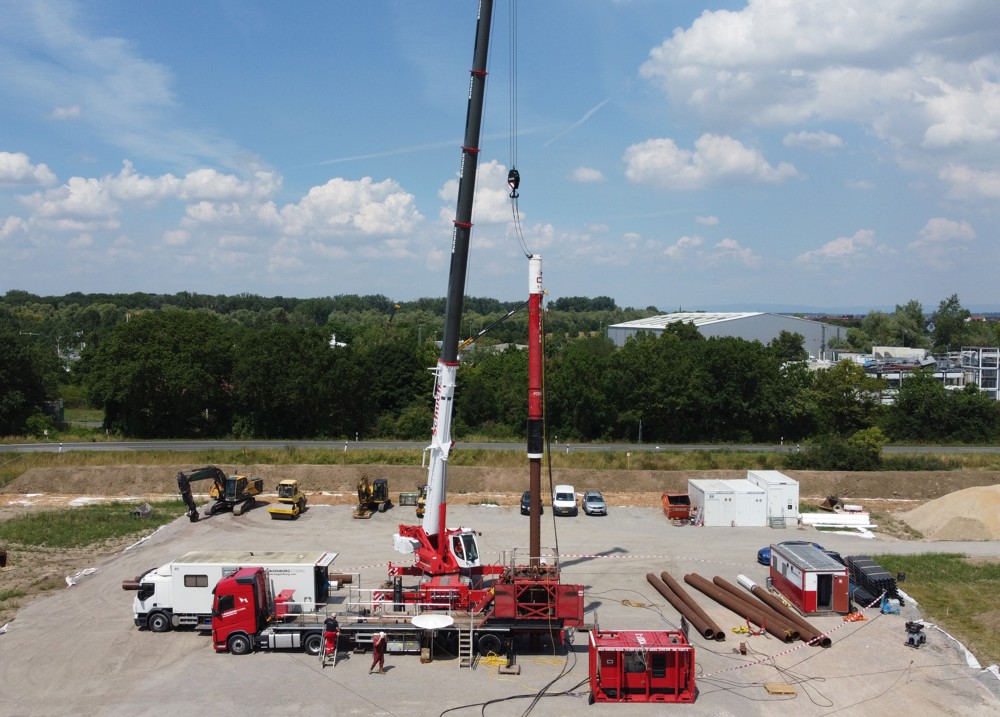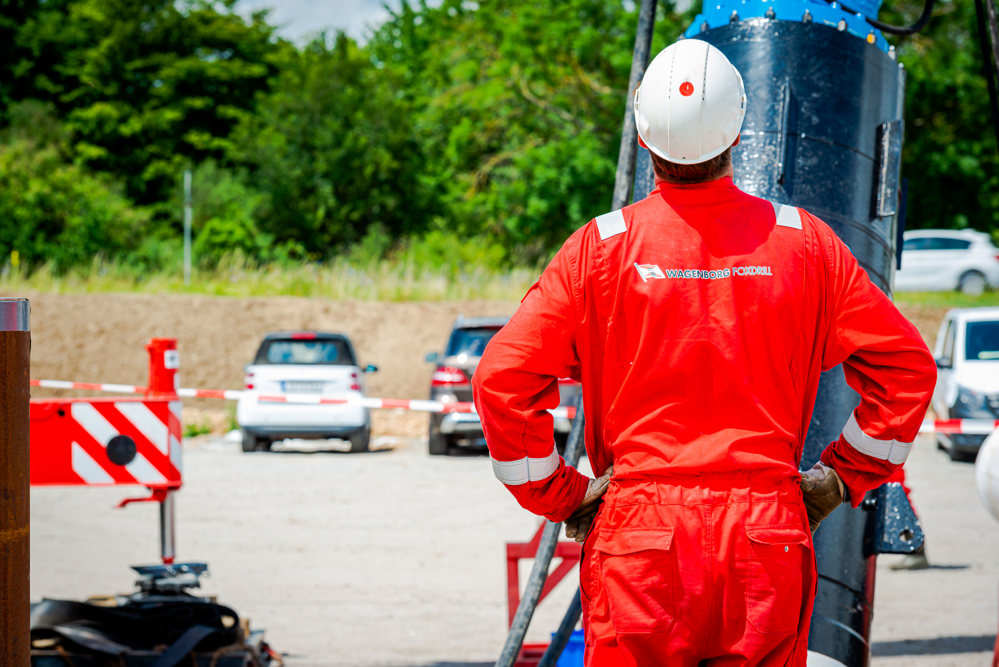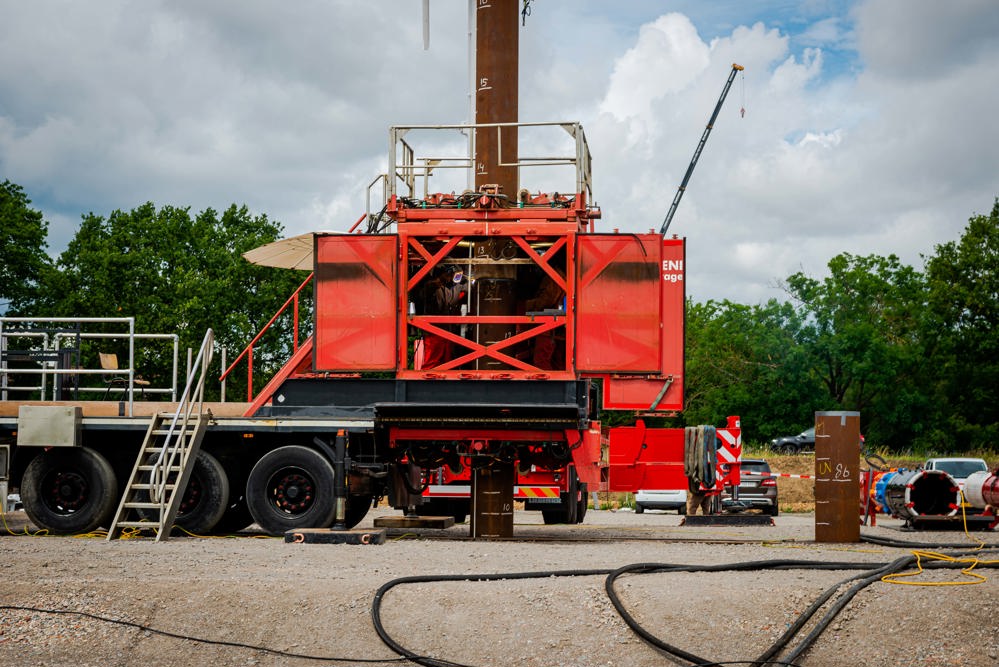
Complex piling job in Germany
Test drilling
"Erwin Bruins, project manager at Wagenborg Foxdrill, explains: "The conductors form the basis for the test drillings in the area. We have installed conductors for this customer before, so we were of course delighted when they asked us to do it again."
"The requested 'deviation' - a small deflection in the bottom tube in the ground - made this job quite special."
How does the conductor pile installation work?
First, a quick lesson in conductor piling for beginners. The conductors are made up of tubes - in this case over 12 meters in length. A special pile-driving hammer is used to drive the tubes into the ground at right angles. When the tube is still about 2.5 meters above the ground, the Foxdrill specialists use a special piling trailer to place the next tube on top of it and weld the tubes together. Then it's the piling hammers' turn again. Depending on the geology of the subsoil, depths of 30 to 100 meters can be achieved.
Bruins: "We can preset the piling hammer to a certain energy level per number of hits. If a pipe has not been driven any further into the ground after 200 hits every 25 centimeters, that is the signal to finish."


Deflection
So much for the standard. So how do you create a deflection that deep into the ground? "We do it with the first piece of pipe that goes into the ground, called the 'deflection shoe'," explains Bruins. "This is a piece of pipe with a slightly thicker wall. We weld this section to the first pipe at an angle of 0.5 degrees so that it bends slightly into the ground, in this case at a depth of 85 metres. In this way, we ensure that the borehole itself also deflects slightly to the desired location".
The pipes also had to be driven exactly parallel to each other. Bruins continues: "Soon there will be a drilling tower above the pipes to carry out the drilling. Such a tower is not very maneuverable. By stacking the three pipes exactly parallel to each other, it will be much easier for the customer to move the drilling derrick from one conductor to another".
Less noise
During the project, measurements were taken to map vibrations and noise. "We measured vibrations at the customer's request because there was an old water pipe nearby. Fortunately, this did not cause any problems. We also measured the noise level as a test in cooperation with the pile hammer manufacturer. They developed a prototype hammer that was less noisy. We tested it here."
"It is an interesting development, especially in view of the increase in geothermal drilling near populated areas."

Rhein Petroleum
Rhein Petroleum GmbH specialises in the exploration and production of domestic crude oil. The company is based in Heidelberg and was founded in 2007. In particular, the company explores those areas in southern Germany where crude oil has been produced in the past, but production has ceased due to lack of economic viability. Exploration takes place using the latest technology, after which conventional drilling and production techniques are used for exploration and production. In its operations, responsibility for people and the environment is paramount at Rhein Petroleum.

